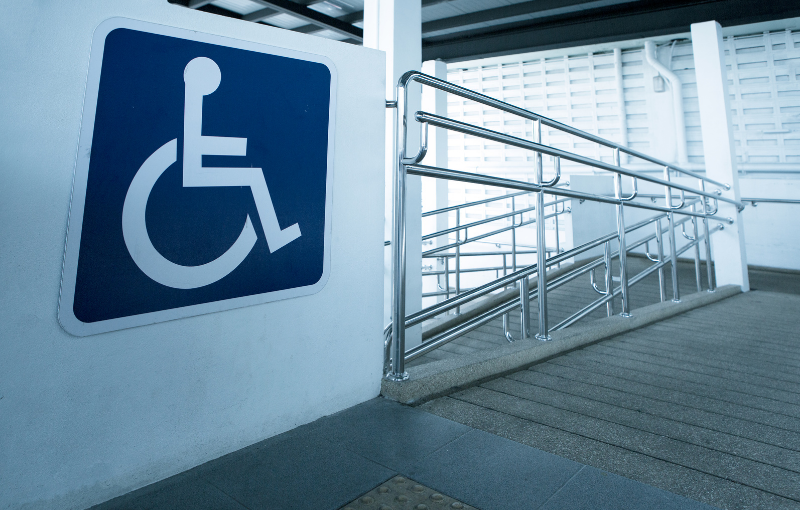How to Make Your Workplace More Inclusive For Workers with Disabilities
October is National Disability Employment Awareness Month, or NDEAM for short. NDEAM has been celebrated since 1945 and spotlights the challenges that people with disabilities face in securing employment, the benefits to companies who hire people with disabilities, and practical advice for organizations working to make their workplace more inclusive.
In the United States, one in four adults has a disability, which means that disability employment concerns should be a concern for virtually every employer. Additionally, 2020 marks the 30th anniversary of the passage of the Americans with Disabilities Act, or ADA.
The ADA provides protection specifically for workers with disabilities, as well as other protections. At the essence of the ADA, employers covered by the law (referred to as “covered entities”) must not discriminate against people with disabilities in the workplace, and also must provide reasonable accommodations for individuals coping with a disability.
Basically, the spirit of the ADA is that if a person can do the essential functions of a job, the fact that they have a disability should not be a factor in hiring decisions and that people with disabilities should have the same employment opportunities as people without disabilities.
There are many benefits for organizations that hire people with disabilities.
Increase Diversity for Organizational Success
First, many employers report that retention for workers with disabilities is higher than that of non-disabled workers in many roles, leading to gains in business continuity, cost savings, and many other benefits. Second, accommodating a worker with a disability isn’t always expensive or challenging: a recent survey found that 58% of accommodations didn’t cost anything at all, and for the accommodations that did have an associated cost, the cost was only $500.
Third, there’s plenty of evidence that a more diverse workforce contributes to organizational success by providing multiple perspectives, and hiring people with disabilities is one way to increase diversity. Lastly, there are certain tax credits available to employers that hire individuals with disabilities and make accommodations, including the Work Opportunity Tax Credit and the Disabled Access Credit.
Despite these advantages for companies and the legal protections offered, people with disabilities are still underrepresented in the workplace and face many barriers to employment.
So how can employers remove some of the barriers that people with disabilities face when seeking employment? Consider these tips for making your workplace more inclusive for people with disabilities.
1. Make the workplace accessible.
If your workplace isn’t accessible for people with physical disabilities, it’s obviously going to make it challenging to recruit and retain people with disabilities. Older buildings may not conform to today’s building codes and may have obstacles such as narrower doorways.
Many things might be easier to retrofit (such as adding Braille signs around the office), but in other cases, it might make sense to move to offices that meet ADA standards. Additionally, accessibility extends beyond the building or facility to include things like the company website.
Can people with disabilities access the career website to even apply for a job? In a recent study reported by SHRM, 89 of the Fortune 100 websites didn’t conform to at least one of the standards of the World Wide Web Consortium’s Web Content Accessibility Guidelines (WCAG) 2.0.
Companies have a lot of work to do to close the accessibility gap. However, accessibility is not a “nice-to-have,” but a necessity: it’s required by law.
2. Provide a mentor upon hire.
For workers with disabilities, a business mentoring program can be a lifeline. A mentor can help a new employee navigate the organizational politics and norms, provide orientation and other job training, and emotional support.
Feeling as though they “fit in” is an important concern for any employee, but it can be especially challenging for people with disabilities, as they can face stigma in the workplace. By pairing them with a mentor when they are first hired, it can help the new employee socialize into the organization.
3. Seek out additional recruiting sources.
Take a good look at how your company is sourcing for the majority of positions, and look for opportunities to cast a wider net.
In nearly every job market, there are community organizations that support people with disabilities and connect with them to find qualified job candidates. In some cases, these organizations can provide other support to your organization, such as training on laws related to employing people with disabilities.
4. Promote a supportive culture.
No matter their background, employees aren’t going to stay at an employer long-term that isn’t respectful and doesn’t value them as people. Make sure all employees are valued, respected, and treated as equals.
There are many benefits to organizations that focus on hiring people with disabilities. With a little bit of effort, companies can make their workplace more inclusive, helping ensure that workers with disabilities can be successful.
Authors
Fridaouss Nabine
Fridaouss Nabine is a writer and strategist with experience in people enablement technologies. A Product Marketing Manager and Content Strategist at Mentoring Complete, Fridaouss engages HR professionals interested in retaining, nurturing, and developing talent through mentoring. In her spare time, she writes about the first generation experience on fyrstgen.com, and enjoys long bike rides around the city.
Recruit Smarter
Weekly news and industry insights delivered straight to your inbox.





